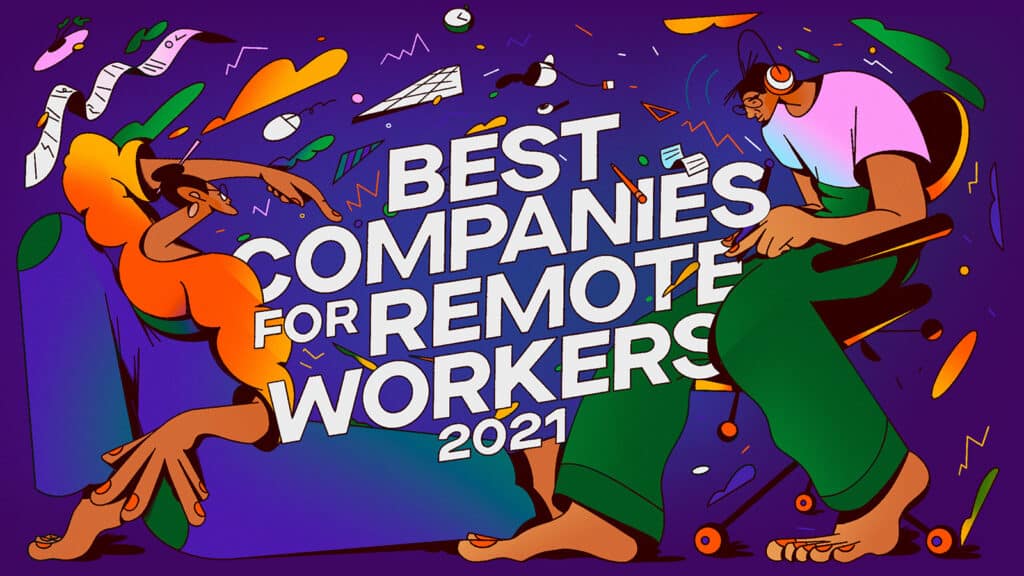As a remote company we have spent many years optimizing our remote hiring process. Creating a culture and operating a team globally can be a complicated process. It requires more than savvy tools and iron clad processes, the team needs to be built around a culture of collaboration and trust.
As more companies go remote, we wanted to share our best practices for remote hiring. It is essential that you prepare for situations like a person’s comfort with technology, their ability to communicate clearly, or challenges in their home workspace, and give them the clearest explanations and guidance. This will allow them to effectively integrate into your team and become a strong player.
Best Company for Remote Workers
Crowd Favorite has been named one of the best companies for remote workers! Quartz selected us as #6 among small companies that embrace the distributed-workforce future.
Clear Communication Starts at the Beginning
Communication is the key to success in almost every aspect of a remote company, and clear communication with the candidate is the first step in our hiring process. When an application is selected, our team will reach out to the potential hire for an introduction call. On this first call, we meet via video and talk about the role, the hiring process, and get to know you better. Face time is very important when communicating with our team. Because we are not in person all of our interactions take place over video calls.
For our team we rely on Slack Channels to organize our daily interactions. We use both email and Slack communal channels for external correspondence with clients and vendors. However, tools are only as good as their users. Creating a culture that values the importance of communication and supporting each other enables our team to operate smoothly no matter the time of day.

How is Remote Onboarding Different?
Hiring, interviewing and onboarding are challenging even when you are in the same room together. But when your only option is to meet virtually as a distributed company, the challenge becomes extreme. What tool/platform is the most used and easily installed or accessed? There are so many meeting systems in use, and ways to connect, but finding the one tool that works for your team is best. We want to avoid using the time for the meeting to be setting up the software needed to connect.
The value of a pre-onboard video call is to provide them a foundation and allow for a much more effective first day/week experience.
– Angela Palmer, Director of Operations
Determining what tool will be used and sending it to the new team member ahead of time can help reduce confusion. Because there are so many tools, it is important to set them up for success. As the expert, select a tool that is accessible and easy to use. Also, be willing to be flexible and understanding as the new hire may not be as familiar and need help.
This is the time to evaluate how your new team member is going to come across to the rest of the team. This is also a chance to clear up confusions, like the expectation of keeping video enabled. The closest we come to a face to face meeting is with video on so it is imperative they understand and agree.
Steps to Onboarding
Onboarding means getting the new team member familiar with the expectations and the dynamics of your company. This is best done in steps or stages, so as to not overwhelm them and to allow them to digest each part. This builds a solid foundation before going to the next thing. Doing this virtually impacts how you share the information and how to test them on where they are in the learning process.
-
Step 1: Request a Pre-Onboard Call
Before the new hire has their first day, we request a one hour video meeting to give them access to the many subscriptions and tools we use as well as calendaring meetings and other items before they start. If you provide them a computer for business use, make sure they receive it before this meeting. The value of this is to provide them a foundation and allow for a much more effective first day/week experience.
-
Step 2: Plan for First Day and Week Efforts
Schedule the necessary meetings, alert the correct people to reach out to the new hire to acclimate them to life at your organization, and assign them a buddy if that is your onboarding method. This defines the terrain of their onboarding and provides them outlets for questions and concerns.
-
Step 3: Roadmap the Entire Onboarding Process
Using calendaring and meetings, prepare them for when to be ready for what element of their role they need to move to as they proceed.
-
Step 4: Graduating
Becoming a great and prepared team member.
Success!
Just like our remote hiring process, our onboarding process focuses on the human experience over the technical experience. We have found several tools to help the process, such as video calls and clear communication on the process. Meeting the candidate where they are and working to understand if they are a fit with the company culture creates a better experience for everyone. Taking the time to understand a potential hire, their skills, and if they will be a good team fit is more important than if they have the right web cam.






